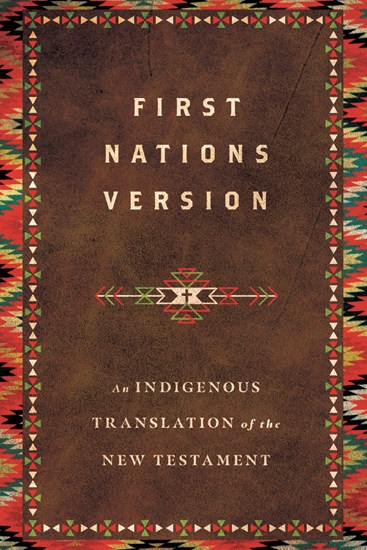 This month, in honor of Native American Heritage Month, our Gospel texts each Sunday will be read from the First Nations Version of the New Testament. This text is in English, but incorporates storytelling styles and other elements common among Indigenous cultures in North America. In order to understand the nuances and differences particular to this interpretation, we’ll also have the text on a slide each week. See below for more information and background on this text.
This month, in honor of Native American Heritage Month, our Gospel texts each Sunday will be read from the First Nations Version of the New Testament. This text is in English, but incorporates storytelling styles and other elements common among Indigenous cultures in North America. In order to understand the nuances and differences particular to this interpretation, we’ll also have the text on a slide each week. See below for more information and background on this text.
Suggested ways to engage this version of Scripture:
- This version is designed to reflect the oral storytelling traditions of North American indigenous cultures. In hearing these verses, let yourself imaginatively engage with members of the early church, who likely heard these stories told aloud, in community, rather than reading the written text.
- Lift up our sisters and brothers in Christ who are hearing, perhaps for the first time, Holy Scripture in words and phrases that parallel their own language patterns.
- Reflect on the different names for God (and other biblical characters) that are used in this version. Ask God to open your heart and reveal more of God’s character through these names.
First Nations Version: An Indigenous Translation of the New Testament
excerpt from the Introduction
The First Nations Version New Testament was birthed out of a desire to provide an English Bible that connects, in a culturally relevant way, to the traditional heart languages of the over six million English-speaking First Nations people of North America.
The FNV is a retelling of Creator’s Story from the Scriptures, attempting to follow the tradition of the storytellers of our oral cultures. Many of our Native tribes still resonate with the cultural and linguistic thought patterns found in their original tongues. This way of speaking, with its simple yet profound beauty and rich cultural idioms, still resonates in the hearts of Native people.
Why English?
It is conservatively estimated that over 90 percent of First Nations people do not speak their tribal language, and even fewer can read it. This is the result of several generations of governmental assimilation policies that attempted to eradicate over 250 languages in North America.This translation is not intended to be tribally specific but to present the Scriptures in a general way, attempting to represent some of the simple yet profoundly beautiful ways our languages can be expressed in English.
We aimed for a style that is easy to read, with an attempt to present, in writing, the cadence and feel of an oral storyteller. A contextual approach was adhered to, using English word choices and idiomatic phrases that are culturally relevant, with an effort to refrain from a stereotypical or culturally degrading simplicity.
Reader Aids
Use of italics: In an attempt to present the Scriptures as a living and moving narrative, at times reasonably implied statements were added within, above, and below the text. For this, we used our imagination as we tried to picture what may have been the reaction in the voices and faces of the participants. These added statements are not intended to change the meaning of the text but rather to bring clarity. For further clarity, these additions are in italics to distinguish them from the text of Scripture.Names of persons and places: We decided to follow our Native naming traditions and use the meaning of names for persons and places in this Great Story. In our community feedback, this practice was affirmed and appreciated. Most reviewers liked the standard English versions of the names in parentheses, while a few did not. We experimented with many options and finally decided to reduce the size of the font for the standard English names. Leaving the names in the text this way, instead of in footnotes, keeps the eye on the text and helps the reader’s eye to more easily skip over it, if so desired.








